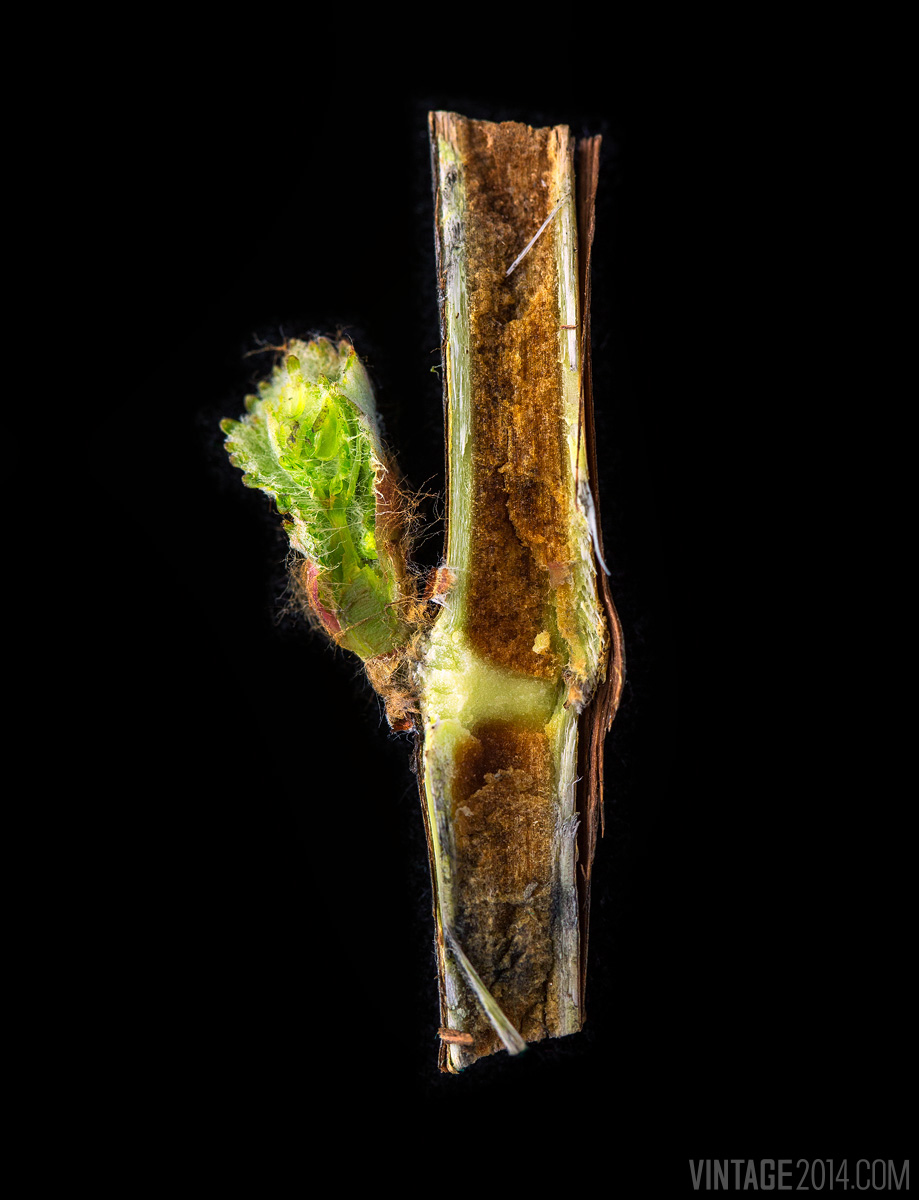After the growing season has ended and the vines are bare and dormant, they need to be carefully pruned in order to sustain the life of the vine and ensure the production of another harvest.
The new vintage’s growth may be invisible to the untrained eye, but, in the spring, grape farmers watch anxiously for the first signal that the vines are waking up. When the vines are pruned, two buds are usually left behind. These buds, in essence, contain everything the grape vine will produce in a given year. This includes new shoots, tendrils for clinging, lush grape leaves, and, hopefully, fruit. Bud break signals the beginning of this growing season and an awakening of the dormant vines. In the photo below, you can see a cross-section of the bud, which shows the inner workings of this extraordinary organism.

As the green leaves around the bud begin to photosynthesize, the sun’s energy is absorbed, and the leaves give off water vapor, which results in drying out the system. The vine interprets this occurrence as a wake-up call and osmosis begins. As the internal pressure increases within the grape vine, it causes its vascular system to pull water out of the soil and up through the roots to sustain the new growth.
When the vineyard soil temperature increases, the energy reserved from the previous year inside the little bud begins to pressurize and actually causes the bud to burst open. This is bud break – and the start of an extraordinary new year.

